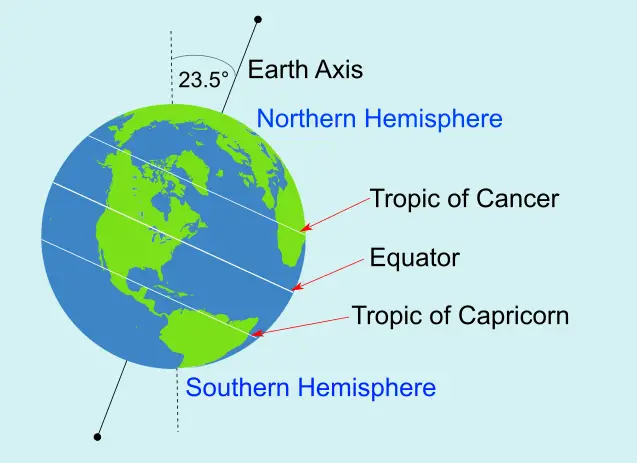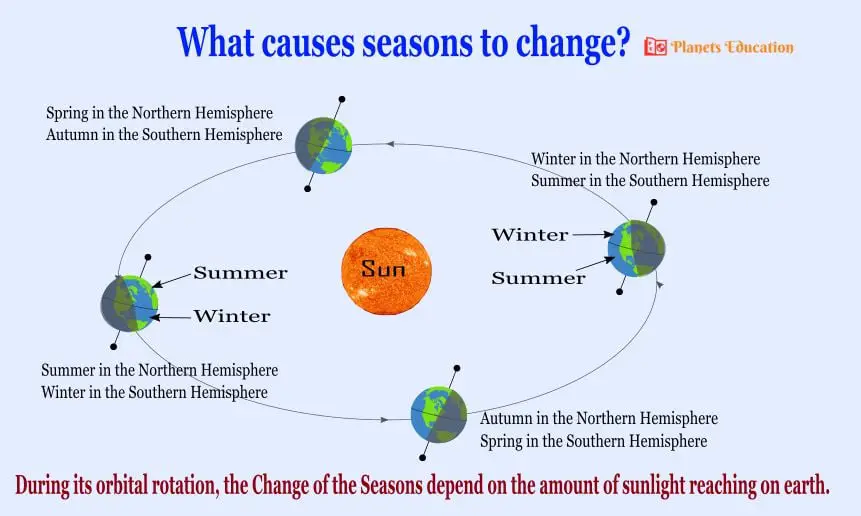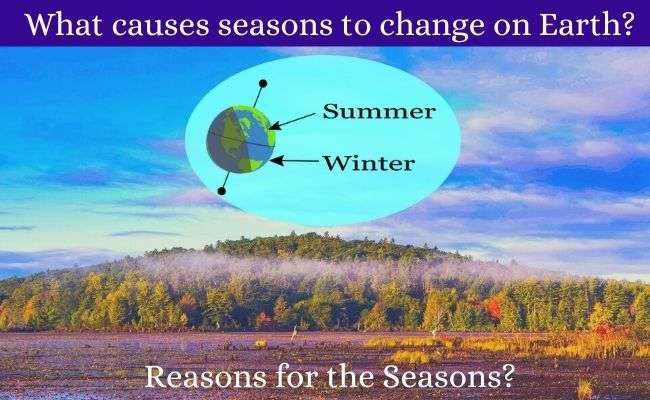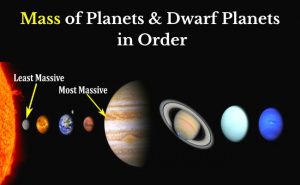“What Causes Seasons to Change on Earth, REASONS for the SEASONS”?
There are mainly four seasons (Winter, Spring, Summer, and Autumn) on the earth. These seasons have some time period to pass and repeat again after a year. Suppose right now at your place the season is winter and you will see a change in the season after 2-3 months and then you can feel a rise in temperature in the atmosphere.
You may have heard about somewhere on earth is summer right now, while it is winter at your place! So the common thing is “seasons change on earth” and you can find different seasons on different parts of the earth.
So here we will know “why and how do seasons change on earth, what causes seasons to change, and why seasons are different on different parts of the earth”?
- Before you will know the exact cause for the change of seasons, there is a myth or misconception you should know about:
| “Many people think seasons change because of the distance variation of earth from the sun. They think Earth gets closer to the sun in summer and farther from the sun in winter. That’s how seasons occur! Well, this misconception is totally wrong”. |
There is one and only reason for the seasons to change is “axial tilt of the earth”. Our earth is tilted around 23.5° from perpendicular to its orbital path. This tilt of our earth causes seasons to change on earth. And seasonal changes do not occur only on earth but happens on all 8 planets of our solar system.
What causes seasons to change? Explained!
Our earth is unique, many things happen here that create a living atmosphere. As we know, our earth has two types of rotation,
- Orbital rotation around the sun – It causes years on earth.
- Axial rotation around its own axis – It causes days on earth.
While orbiting around the sun, it rotates on its axis. But this rotational axis is tilted around 23.5°. According to an ideal rotation, its rotational axis should have been perpendicular to the orbital axis. But the real situation is the rotational axis is tilted almost 23.5° from the perpendicular to the orbital axis.
This tilt causes some regions of the earth to get direct sunlight whereas some regions do not get enough sunlight. The earth’s parts (regions) where the sunlight is direct happen in summer at that time. And the earth regions which do not receive enough sunlight have winter seasons.
- For the period of 2-3 months sunlight directly fall on a specific region when the planet tilted towards the sun and at this time the region would experience the summer season. But when the tilt of planet earth is opposite to the sun that specific region does not receive enough sun rays and at that time (next 2-3 months) the specific region would experience the winter season.
- The days become longer in summer and nights become shorter. While in winter the days are shorter whereas nights are longer.
- After the passing of winter and summer, for 2-3 months (total 4-6 months) that specific region experiences almost an equal amount of sunlight. At that time the days and nights almost have the same amount of time. Then Spring and Autumn happen.
To understand it clearly we should know the regions or structure of the earth (exactly where the seasons change and where do not).
Regions of Earth that get affected by Seasons
Before you know how seasons happen, you must know about the structure of the earth.
Our earth has some imaginary parts (dividing lines), such as:
- Northern Hemisphere
- Tropic of Cancer
- Equator
- Tropic of Capricorn
- Southern Hemisphere

You should get, what are these parts or regions of earth through the given image. The Equator is an imaginary middle line pass through the earth. Northern Hemisphere is the above part from the equator, whereas the Southern Hemisphere is the below region of the equator. Tropic of Cancer is an imaginary line that divides the Northern Hemisphere, whereas the Tropic of Capricorn divides the Southern Hemisphere.
How do seasons occur in different regions of the earth, explain with a diagram.
Our planet rotates around the sun in an orbit and completes one orbital rotation after one year. During each rotation (through its 365.25 days) it gets four seasonal changes. And different regions of the earth have different seasons at the same time throughout its one orbital rotation (one year).
“If the Northern Hemisphere has summer at the same time Southern Hemisphere would have a winter season”.
For example, if there is winter in Canada or India then at the same time Australia would experience the summer season. Because Canada and India exist in Northern Hemisphere whereas Australia exists in Southern Hemisphere.
Now with the help of the below diagram (image), you can understand clearly what exactly causes the seasons to change on earth.

Let’s understand this through a fixed area:
Suppose India, which comes in the northern hemisphere, has a winter season at a time (December to February). At that time India receives less sunlight because the tilt of the earth is opposite to the sun. And at the same time Australia, South Africa, and South America will face direct sunlight and experience the summer season because they exist in the southern hemisphere region of the earth.
So that’s how seasons change on earth and the tilt of the earth is the cause of summer, winter, rainy, spring, or any other seasons.
Do you know… if you stay on Neptune, you’ll have to wait almost 4o years to see the change of its season? Know here more about Neptune Planet Facts.
Also Read:-
- Earth Facts: Interesting Information and Facts
- 15 Interesting Facts about the Sun with General Information
- 5 Best Solar System Backpacks in 2024
- Mass of Planets in Order from Lightest to Heaviest
- Star Projector {2024}: Star Night Light Projector




